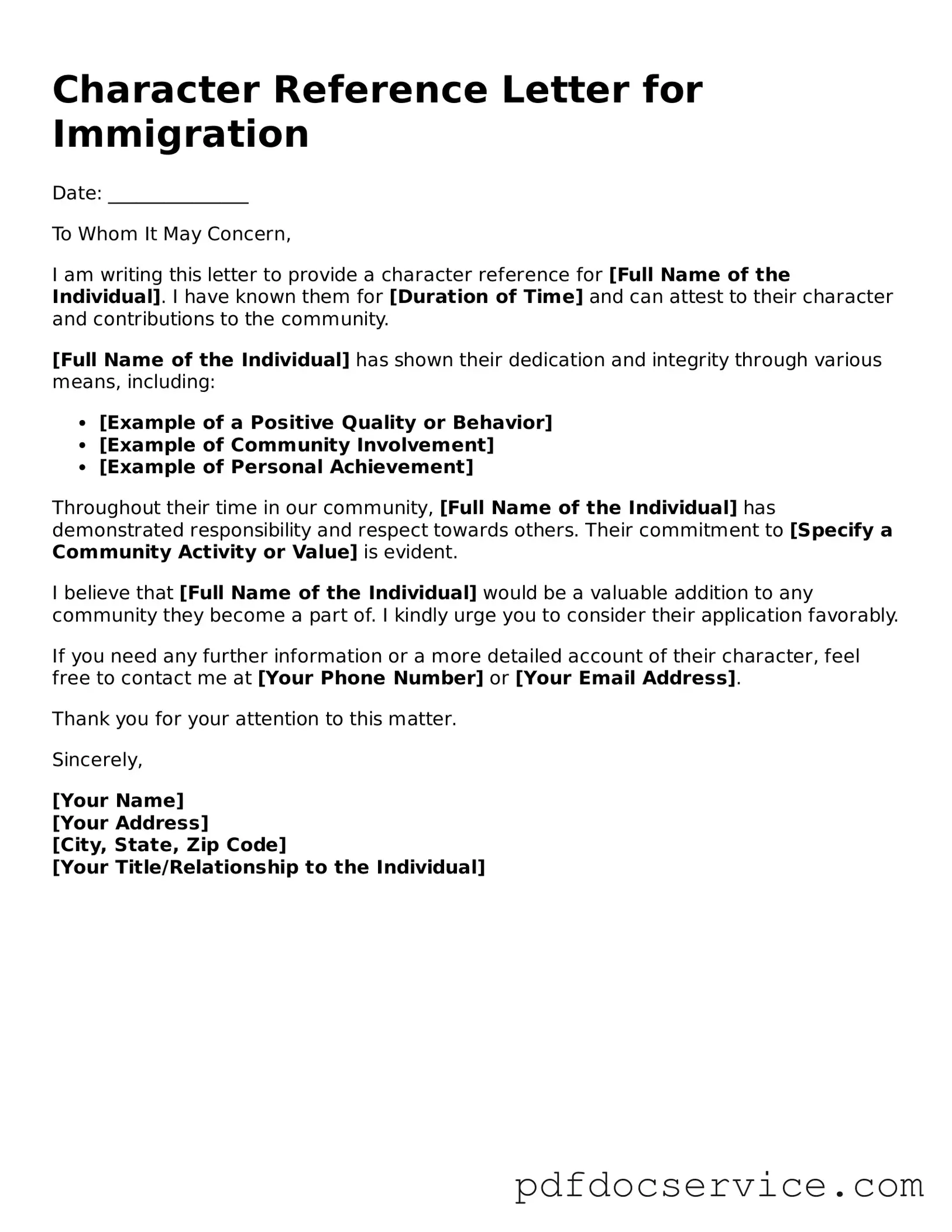What is a Character Reference Letter for Immigration?
A Character Reference Letter for Immigration is a document that provides personal insights into an individual's character, morals, and contributions to the community. This letter is typically written by someone who knows the individual well, such as a friend, employer, or community leader. It can support an immigration application by demonstrating the applicant's positive attributes and good standing in the community.
Who should write a Character Reference Letter?
The letter should be written by someone who has a close relationship with the applicant and can provide a genuine perspective on their character. Ideal writers include:
-
Friends or family members
-
Employers or supervisors
-
Teachers or professors
-
Community leaders or members of local organizations
It is important that the writer has known the applicant for a significant period and can speak to their qualities and contributions.
What should be included in the letter?
A well-crafted Character Reference Letter should include several key elements:
-
Introduction:
The writer should introduce themselves and explain their relationship with the applicant.
-
Personal qualities:
The letter should describe the applicant's character traits, such as honesty, reliability, and kindness.
-
Specific examples:
Providing anecdotes or specific instances where the applicant demonstrated positive behavior can strengthen the letter.
-
Conclusion:
The writer should summarize their support for the applicant and express confidence in their character.
Including these elements can help create a compelling reference letter.
How long should the letter be?
The length of a Character Reference Letter can vary, but it typically should be one to two pages long. This allows enough space to convey important information without overwhelming the reader. Clarity and conciseness are important, so the writer should focus on the most relevant points.
While there is no strict format, a Character Reference Letter generally follows a standard business letter format. This includes:
-
Writer's address and date
-
Recipient's address (if known)
-
Salutation (e.g., "To Whom It May Concern")
-
Body of the letter
-
Closing (e.g., "Sincerely") and the writer's signature
Using a professional tone is recommended, as this reflects the seriousness of the letter's purpose.
Can the letter be handwritten?
While a handwritten letter can add a personal touch, it is generally advisable to type the letter. Typed letters are easier to read and present a more professional appearance. However, if the writer has a distinctive handwriting style and feels that it better conveys their sincerity, a handwritten letter may be acceptable.
How does the letter impact the immigration process?
A Character Reference Letter can play a significant role in the immigration process by providing evidence of the applicant's good character. Immigration officials often review these letters to gain a better understanding of the applicant's background and contributions to society. While the letter alone may not guarantee approval, it can enhance the overall application by adding a personal perspective.
